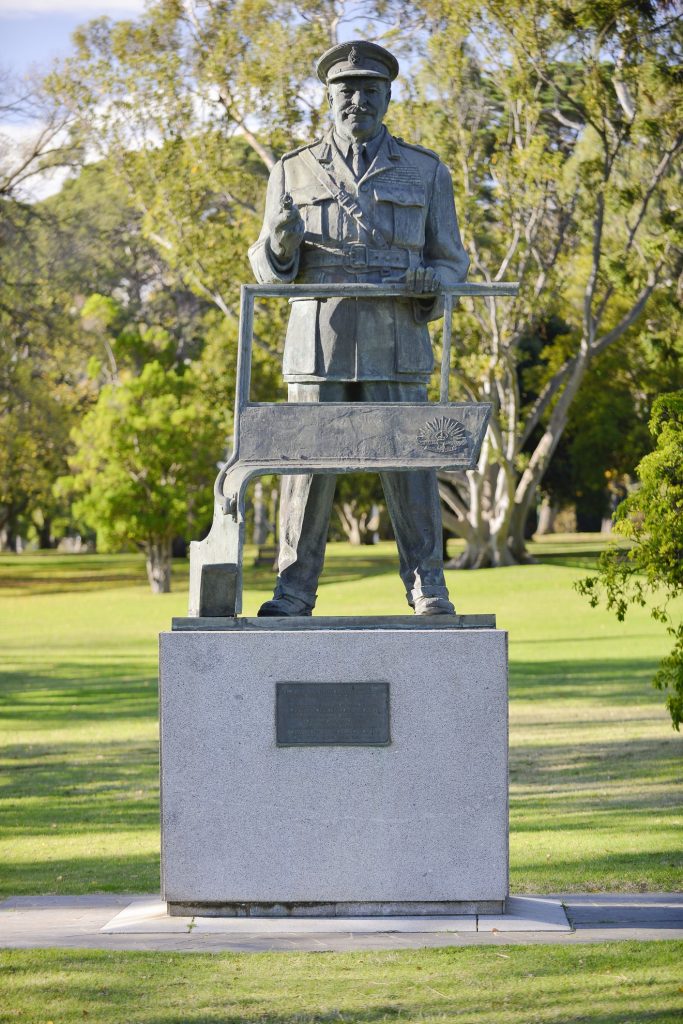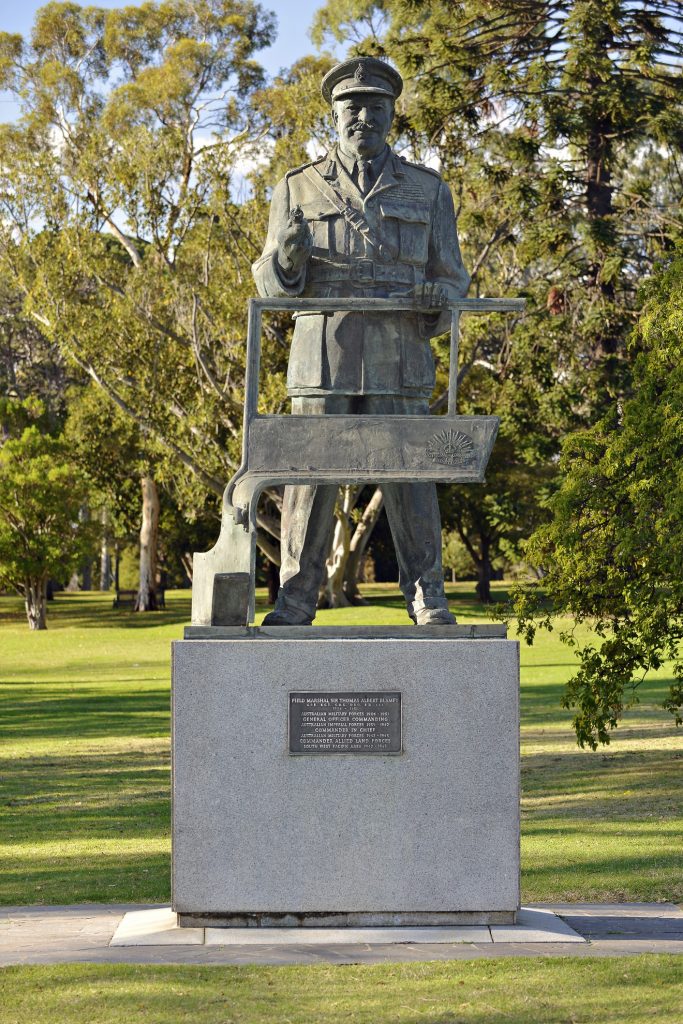Sir Thomas Blamey Memorial, Raymond B. Ewers, Bronze statue with granite pedestal, 1960, Kings Domain, cnr Government House Dr & Birdwood Ave
Summary
Location: Kings Domain, cnr Government House Dr and Birdwood Ave
One rectangular cubic pedestal realised on granite slabs fixed on concrete. Bronze inscription on front facade. Oversize 3D bronze statue of Thomas Blamey in uniform standing behind an army vehicle windscreen installed on top of pedestal. The monument was cast in six pieces, four at a foundry in London and two in Melbourne, 1959.
A memorial to Blamey was announced in 1958, although its site opposite the memorial to Sir John Monash had been reserved since 1952. There was some dispute over just what vehicle Blamey would be mounted on, with both tradition and Blamey’s wife demanding a horse. Ewers won this battle and mounted his subject on a military Jeep. Sited opposite Monash, depicted on horseback and with whom Blamey had served in World War One, Ewers’ statue captures the transformation of the technologies of war through this symbol of its mechanisation. In familiar military style, the plaque is a roll call of Blamey’s military positions. Ewers’ sculpture is one of the few pieces of traditional memorial statuary created after the 1950s. It represents a change in memorial tradition and, importantly, a decline in monumental figurative sculpture.
Sir Thomas Blamey was born near Wagga in 1884 and was the first Australian to become field marshal. He was a controversial man, who commanded much respect for his actions on the battlefield and for his willingness to challenge British and US generals, but his skills did not translate well to the civilian arena. As police commissioner of Victoria between 1925 and 1936, he was harsh in his treatment of Labor activists and the unemployed, and he resigned amid scandal when he was linked to wounding the superintendent of the Criminal Investigation Bureau. Still, Blamey was knighted in 1935 and promoted to field marshal in 1950, the year before he died.

